A cover letter header that complements your resume design completes your application package like the bow on a wrapped gift: it holds everything together and adds a polished finish. It also announces your name, title, and all relevant contact information in a legible format.
Think of your header as the business card of the cover letter. Without this information front and center, no matter how compelling your text, a recruiter can’t find you or won’t take the trouble to find the matching resume header that contains your email and phone number.
As such, the header might seem straightforward; almost negligible. In reality, however, there are both some tricks in crafting a header that can make your cover letter stand out and some errors that can doom your candidacy right away.
In this article, we will provide answers to:
- Why do I need a cover letter header?
- What should I include in a header for my cover letter?
- How do I design an eye-catching header?
- How can I avoid errors in my cover letter header?
- Plus: 11 cover letter header examples.
What does a cover letter header do?
A cover letter header performs several functions within the document and for your application package as a whole. You’re not just submitting this letter, but a resume and, perhaps, a portfolio.
- Create a cohesive package. Imagine receiving an email in which the “from” field was empty. You’d be puzzled … and tempted to delete it without further investigation. Or this scenario: several attachments pop up in your mailbox separately. How do you know they belong together? The cover letter header complements the headers of your other application documents to present a united image.
- Present contact information. If HR is dazzled by your letter, you don’t want them to have to search for your resume to find the information they need to immediately contact you.
- Add a graphic element. A cover letter is four or five paragraphs of text, a greeting, and a goodbye. That’s a lot of black text on a white background. A cover letter format adds design, a chance to reveal a bit about your personality and perhaps a subtle color to draw the eye.
What should I include in a header for my cover letter?

In the days of snail mail and typewriters, a heading for a cover letter included not only your name, full address, telephone number and the date, but those of the person you were addressing and all the company’s information. Those days are long gone.
In fact, in most instances you should not include your street address or any of the company’s information since you won’t be dropping your letter off at the post office. This old-school formality just takes up space you could use to wow the recruiter with your job skills.
Here is what you should include:
- Full name. Your middle name is optional, but if you have a common name such as Mary Jones, your middle name or initial will help separate you from other Mary Joneses.
- Title. Not of the job you have, but of the job to which you are applying. This avoids any confusion over whether you’re looking to fill the junior slot or the senior slot.
- Email and phone number. Make sure your address is professional, in a format such as marykjones@gmail.com, and your phone has an appropriate voice mail message.
- City and state. No other part of your address is necessary, but if you are willing to move, note that within the body of your letter.
- Date. This may seem redundant since the date you posted your application online will appear in the ATS, but some people still prefer to read on paper.
Optional
-
Name and title of your reader. You may choose a cover letter format that looks like this:
- To: Stanley McMartin
Sales Manager - From: Mary Jones
Senior Sales Representative
- To: Stanley McMartin
- LinkedIn profile, social media accounts or portfolio. Only include your LinkedIn profile if it is current and shows your industry contacts. Do not include personal social media.
- Pronouns. Check to see if employees of the company list pronouns in their bios. This will tell you whether you should or could do the same (if you are comfortable doing so).
How do I design an eye-catching header?
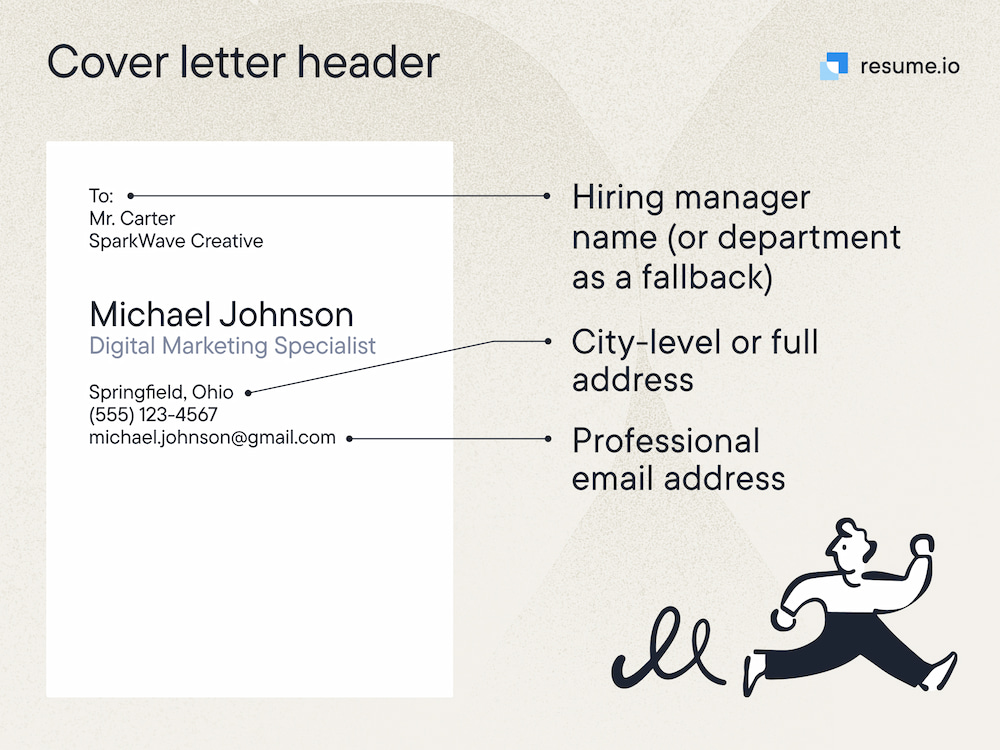
An eye-catching header for a cover header uses the same design principles as a resume header. Keep it legible, neat, and reflective of both your professional personality and the company culture.
Start with this winning formula:
- Your name should be placed at the top of the page and the largest type on the page
- Your title can be the same size or smaller than your name
- All other types should be about the same size as your body type (10-12 pt.)
- Contrast background color with text color
- Clearly distinguish the header from the body of your cover letter
- Choose a design that complements your resume header. Our cover letter templates all correspond to resume templates, making this task easy!
- Highlight your name in a larger font or with color
- Choose a font that reflects your style
- Leave eye-pleasing white space
- Let your name dwarf the rest of your header
- Go overboard with Comic Sans or the like
- Create a tiny header to leave more space for text
How can I avoid errors in my cover letter header?
A cover letter header is no different from any other part of your application in that it needs a thorough proofreading before you hit the send button. Sometimes, it’s the information that we know best that we rush through.
- Reread everything, even your name.
- Check that the title you input matches the one from the job listing.
- Look for reversed numbers in your phone number and email. A recruiter will not hunt down your contact information if you make a mistake here.
- Click the links for your social media accounts and portfolio to make sure they work.
- If your header includes a “to” line, make sure you have spelled the recipient’s name correctly and that you have not copied your previous cover letter and failed to update the name.
- Make sure you have the correct date (especially if it's just past New Year’s and you’re not used to 2024 yet.
- Save your letter as a PDF (our cover letter builder does that automatically) to prevent shifting margins and text in different applications.
11 Cover letter header examples
Below are a few cover letter header examples from our wide array of cover letter templates with explanations of their designs and ideas for what careers they complement.
1. All-caps names
One method of distinguishing your name is to choose to present it in all capital letters.
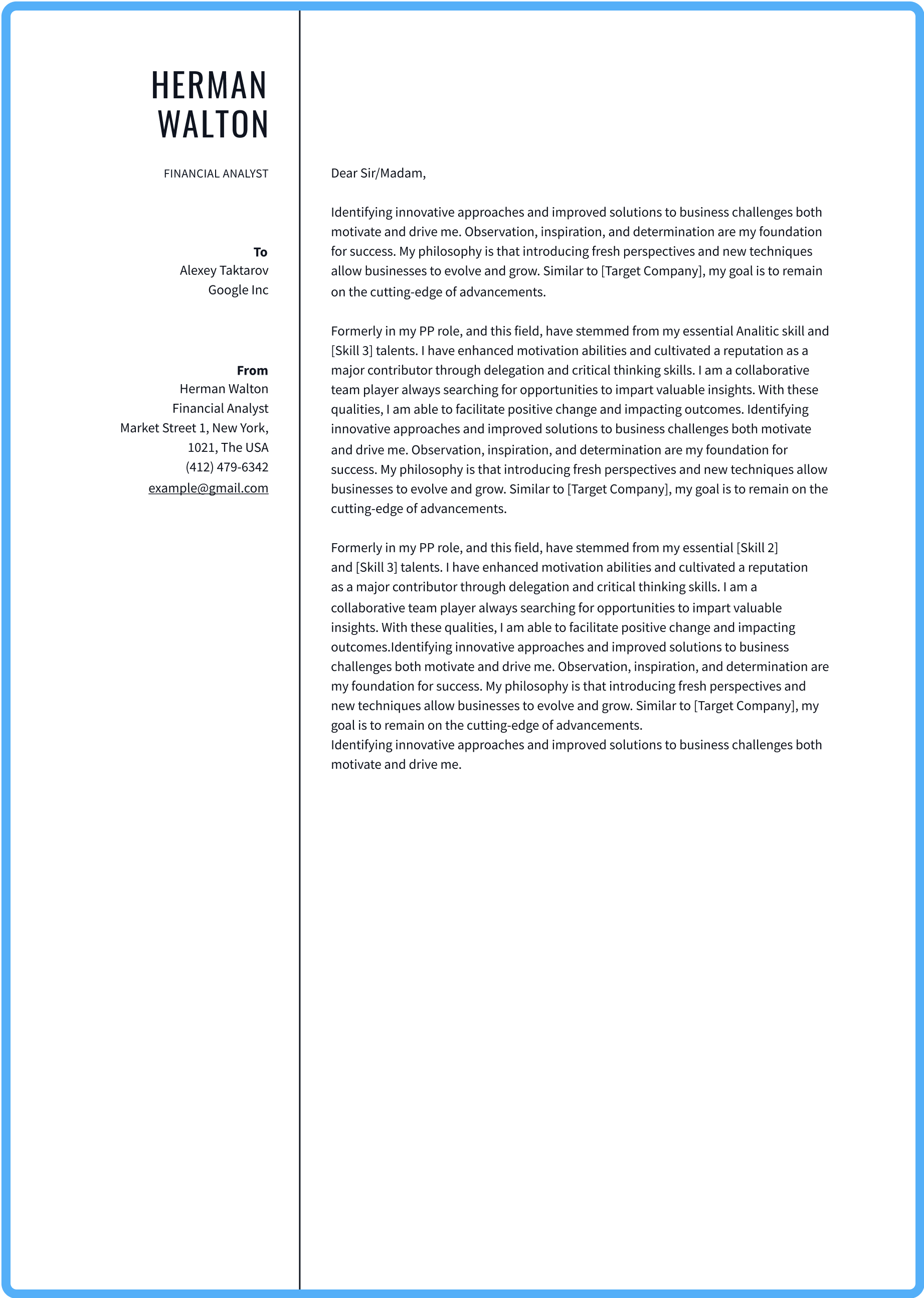
The New York cover letter header template, above, achieves a balance of this style while maintaining an understated and classic look. Contributing to that image is the relatively small font size and the choice not to use color. The vertical line between the header and text provides a cue for the reader to look down instead of continuing to read across the page.
This cover letter layout is a great choice for an IT worker such as a full stack developer professional who wants to project detail-orientation and precision.
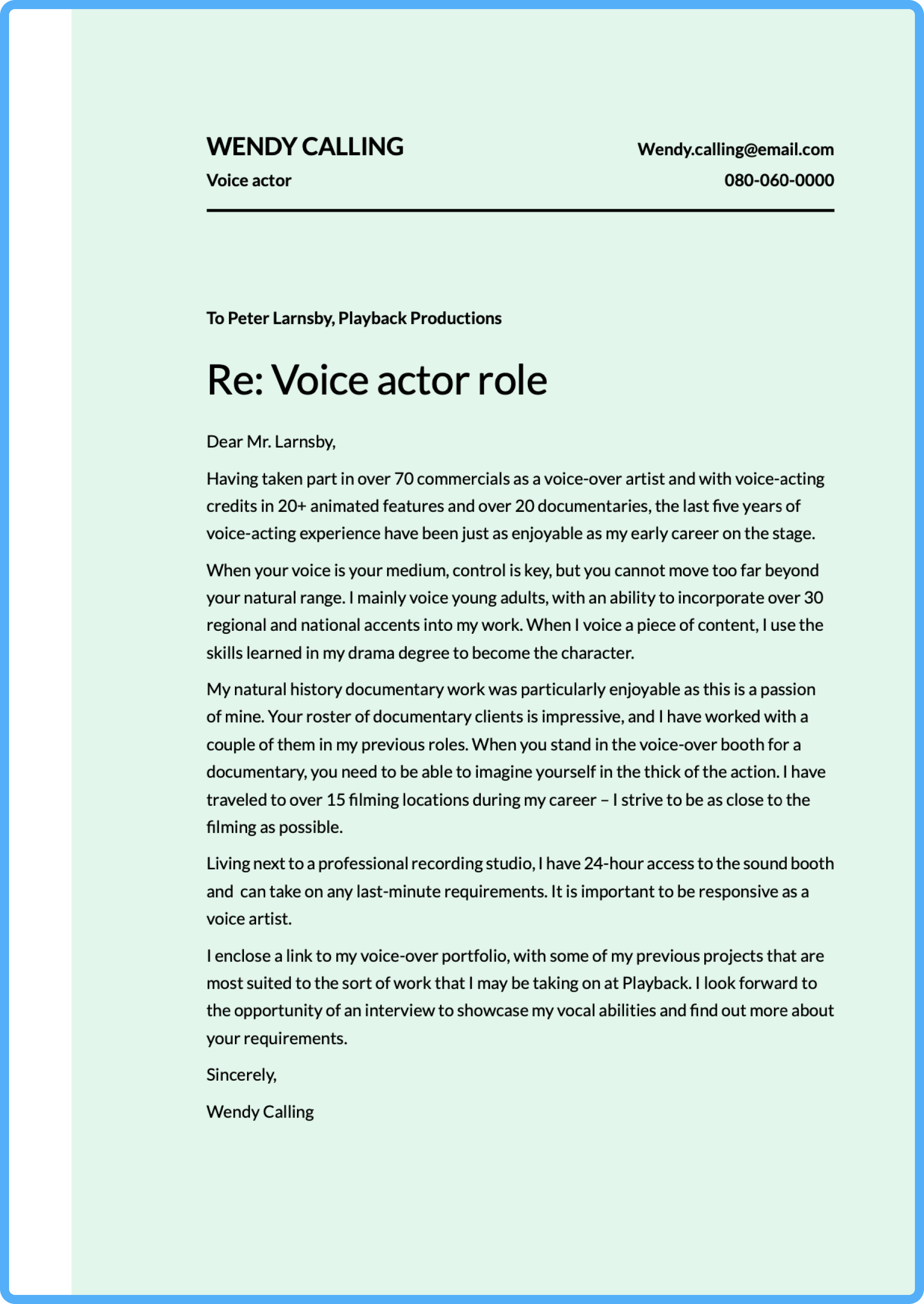
For more pizazz, add color to your all-caps style. The background color of the Copenhagen template, above, is customizable and the body type will change to ensure the utmost readability. With that much color, a simple font and restrained type sizes are your best bet.
This design works best for more creative fields such as voice actor or a job at a company with a creative culture such as Apple.
2. Header at the top
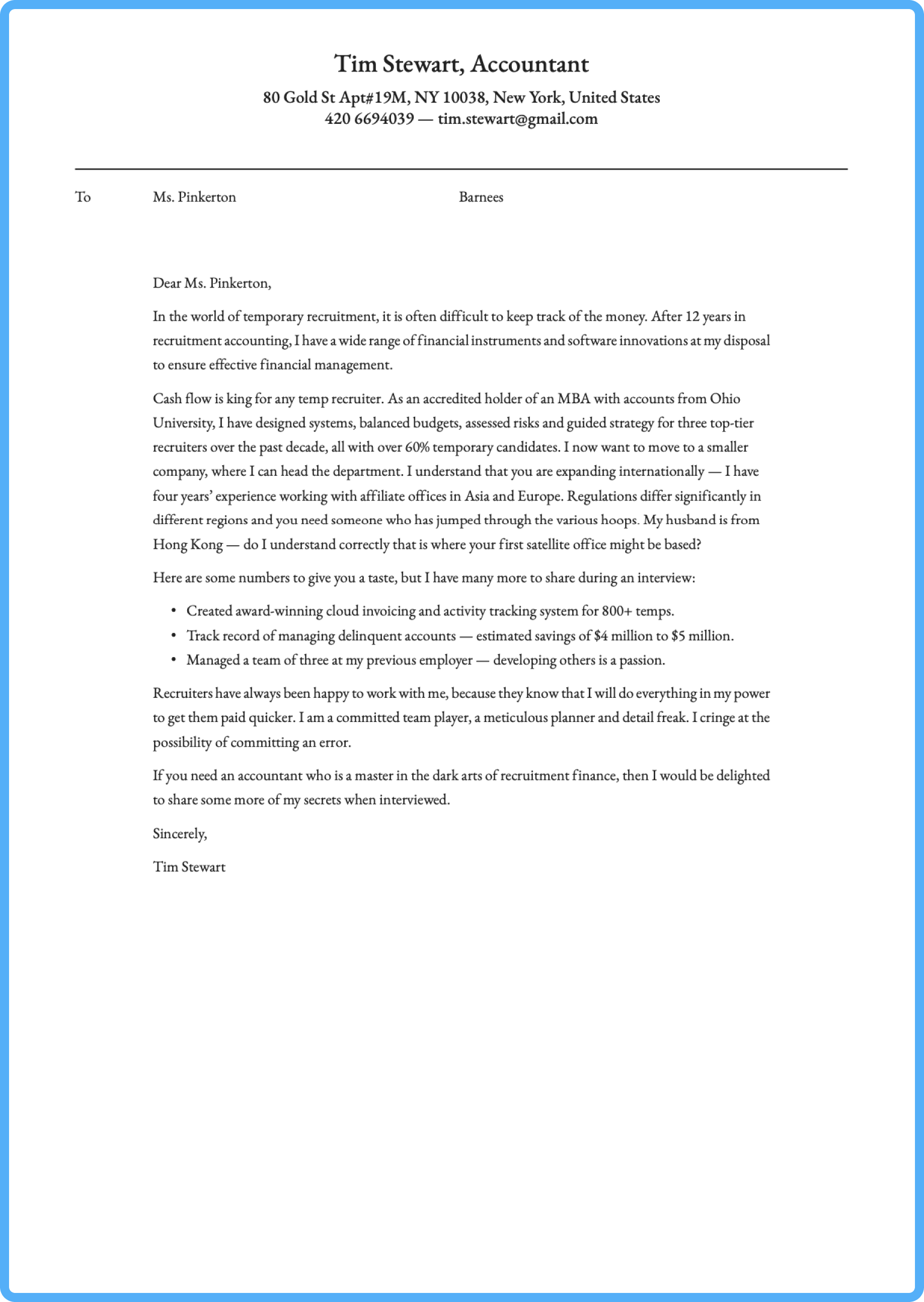
Contact information centered at the top of your letter makes for a classic style, especially when accompanied by a serif font such as Times New Roman. While some find it a bit stuffy, if you want to project an old-school image of elegant professionalism, you can’t go wrong with this format.
The London template, above, sends the right message for accounting or law enforcement among other conservative careers.
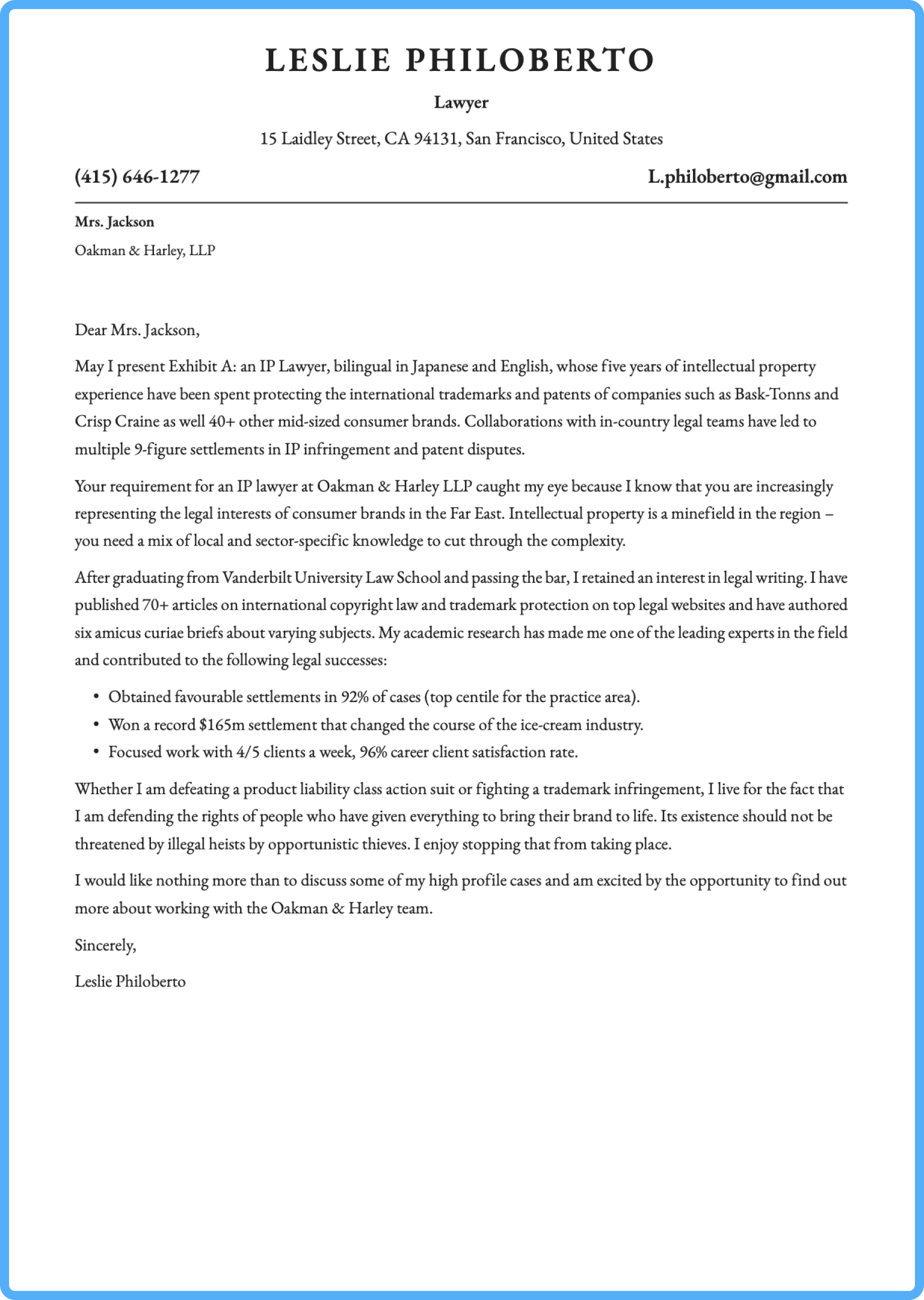
A header with an all-caps name that pushes your phone number and email or other information, to the right and left margins gives a bolder, more modern impression while still signaling professionalism in a fairly conservative or serious career.
Depending on the type of law they practice, this style could make an excellent choice for a lawyer or a public relations specialist with business clients.
3. Vertical header
One technique for adding eye-pleasing white space is a vertical header. Since we read from the top left, this also places your name in the spot a recruiter will gravitate toward first. Note the subtle differences between the two templates below.
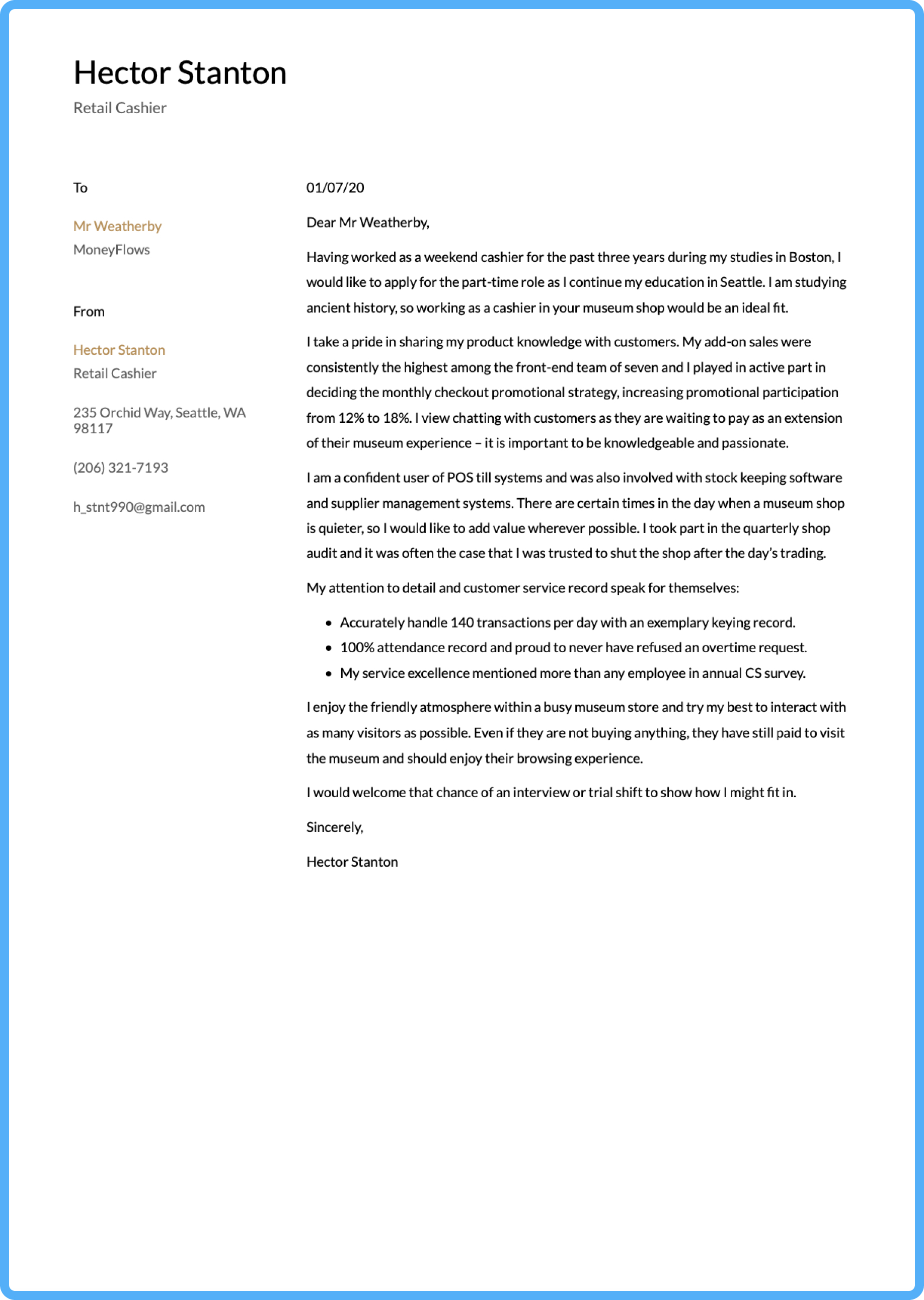
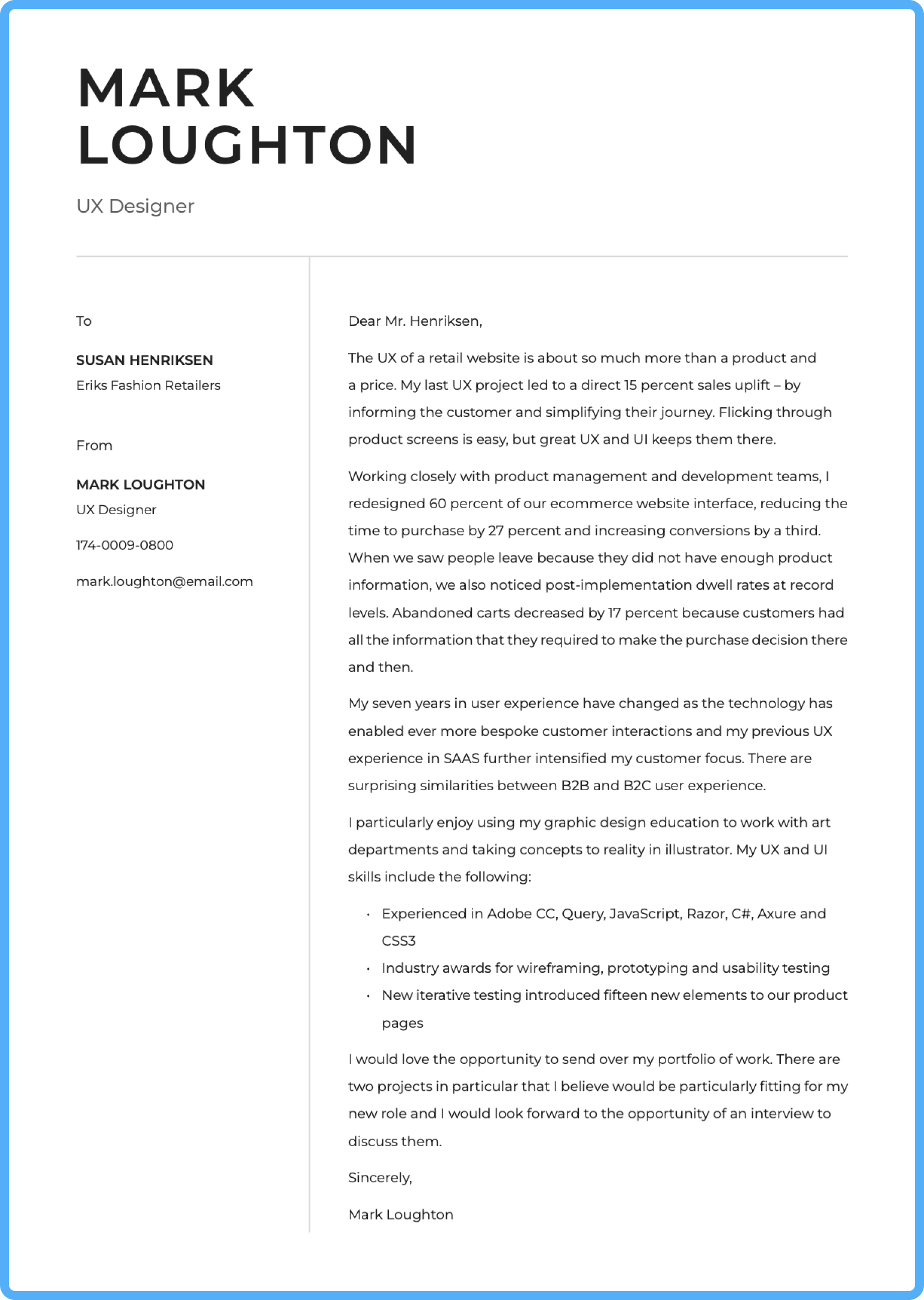
Milan, the upper template, is more understated, with its upper and lower case name, smaller font and simple blocks of type. Simply swapping out the tan hue of the names in the “to” and “from” fields for a less subtle color would give this classic template a different feel.
The Berlin template, the lower template, takes a bolder approach with a sans serif, all-caps names and striking lines. Clean and modern, this design can serve a range of jobs, from UX designer to cashier
We suggest the Milan style for an upper level office worker such as a human resources manager who wants to project gravitas. With a bolder color choice, this template also could project friendliness and competence and is an excellent option for a customer service representative.
4. Splash of color
For more relaxed or creative careers, a well-chosen color may be just the right touch. How much color you include depends on your career and how your cover letter will be viewed.
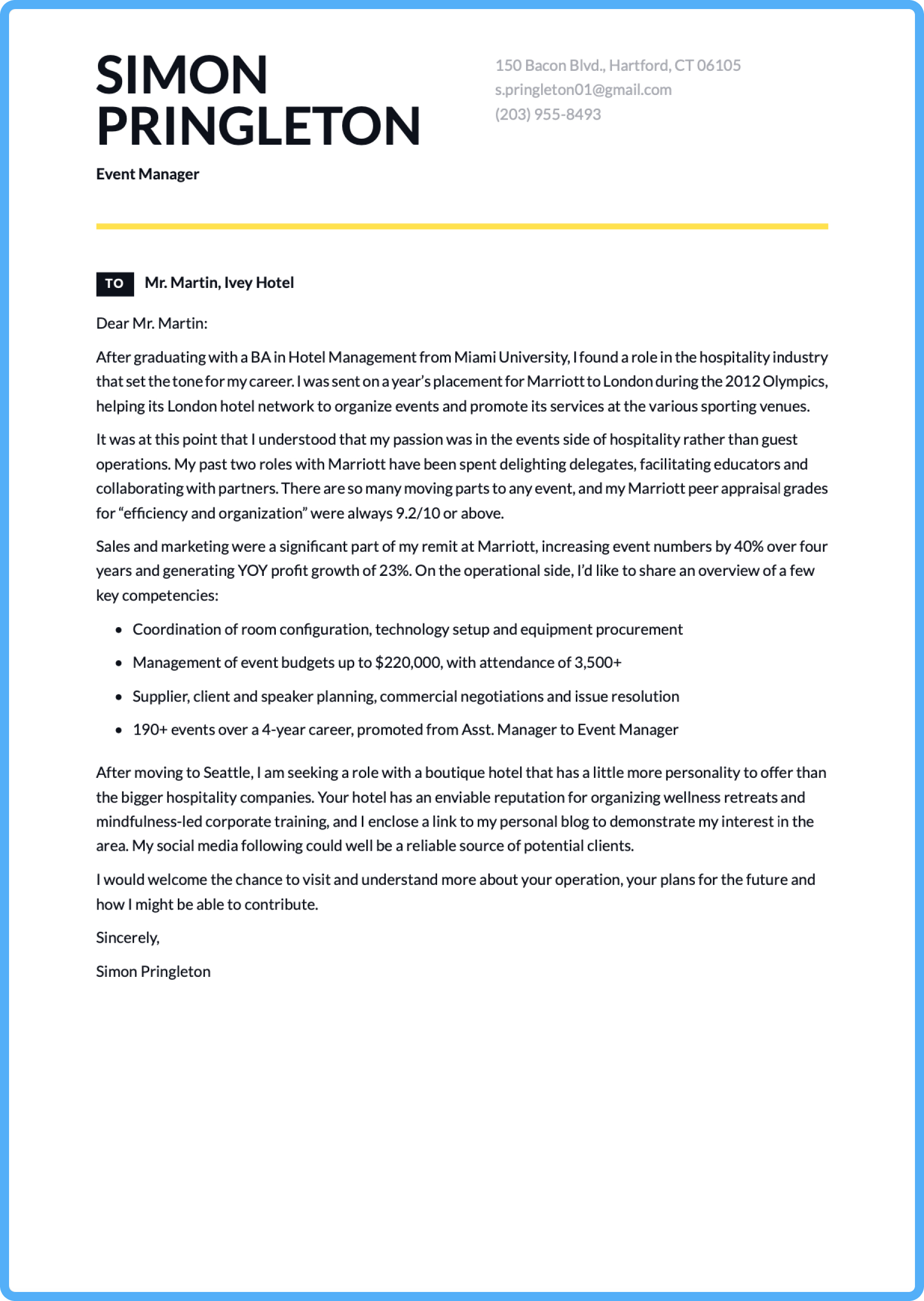
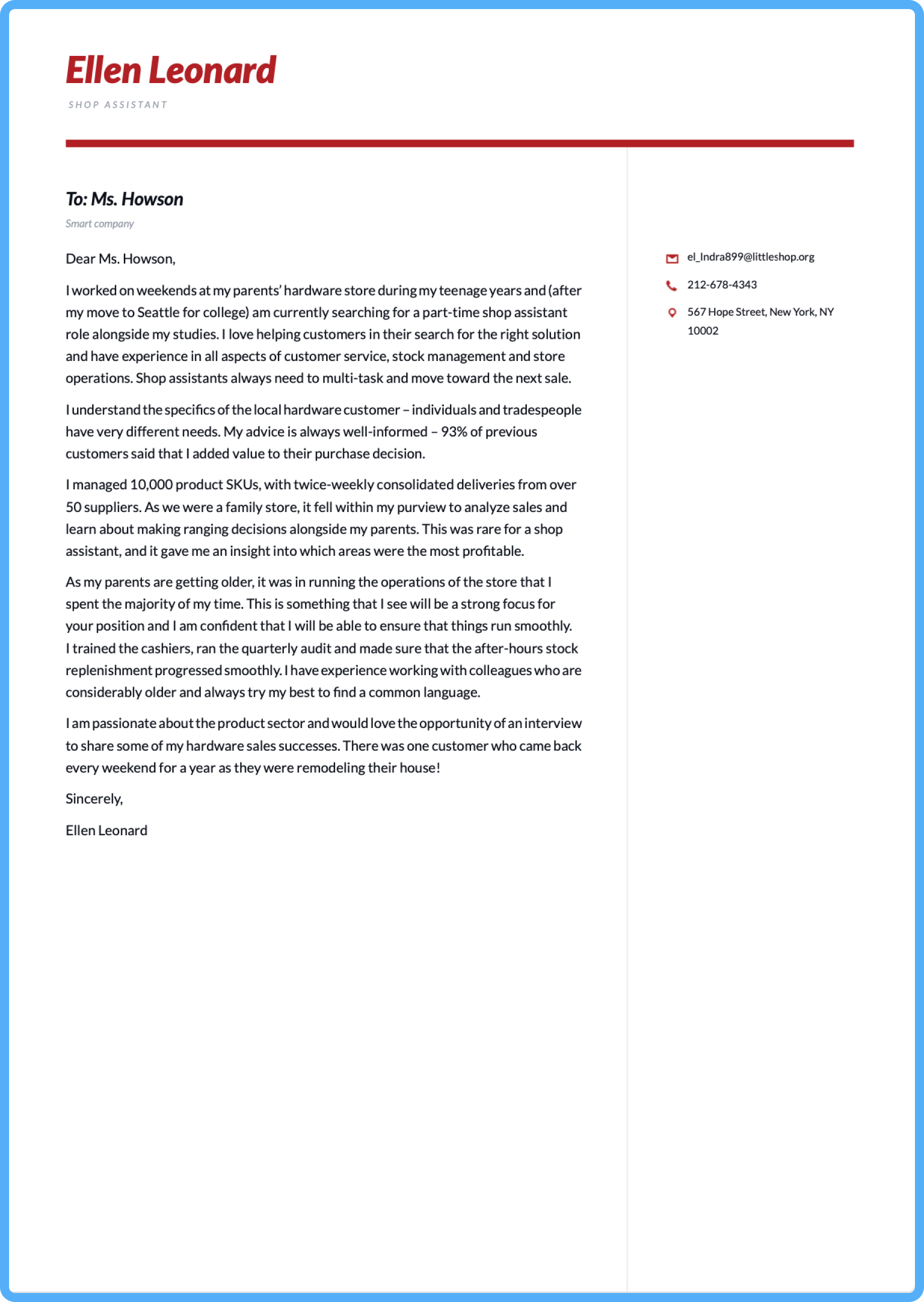
Our Madrid template, the upper template, employs color to separate the header from the text with a bold line. Note the other design touches: a white-on-black “To” box and gray-scale contact information. The Tokyo template takes color a step further and uses color icons to highlight the writer’s data. Either of these works well for a more energetic field such as event manager or shop assistant.
Make a vivid statement as a true creative with expanded color. Striking cover letter headers also work well if you are applying at a startup or a company that has a lively culture or public image. For example, a brand ambassador for an energy drink.
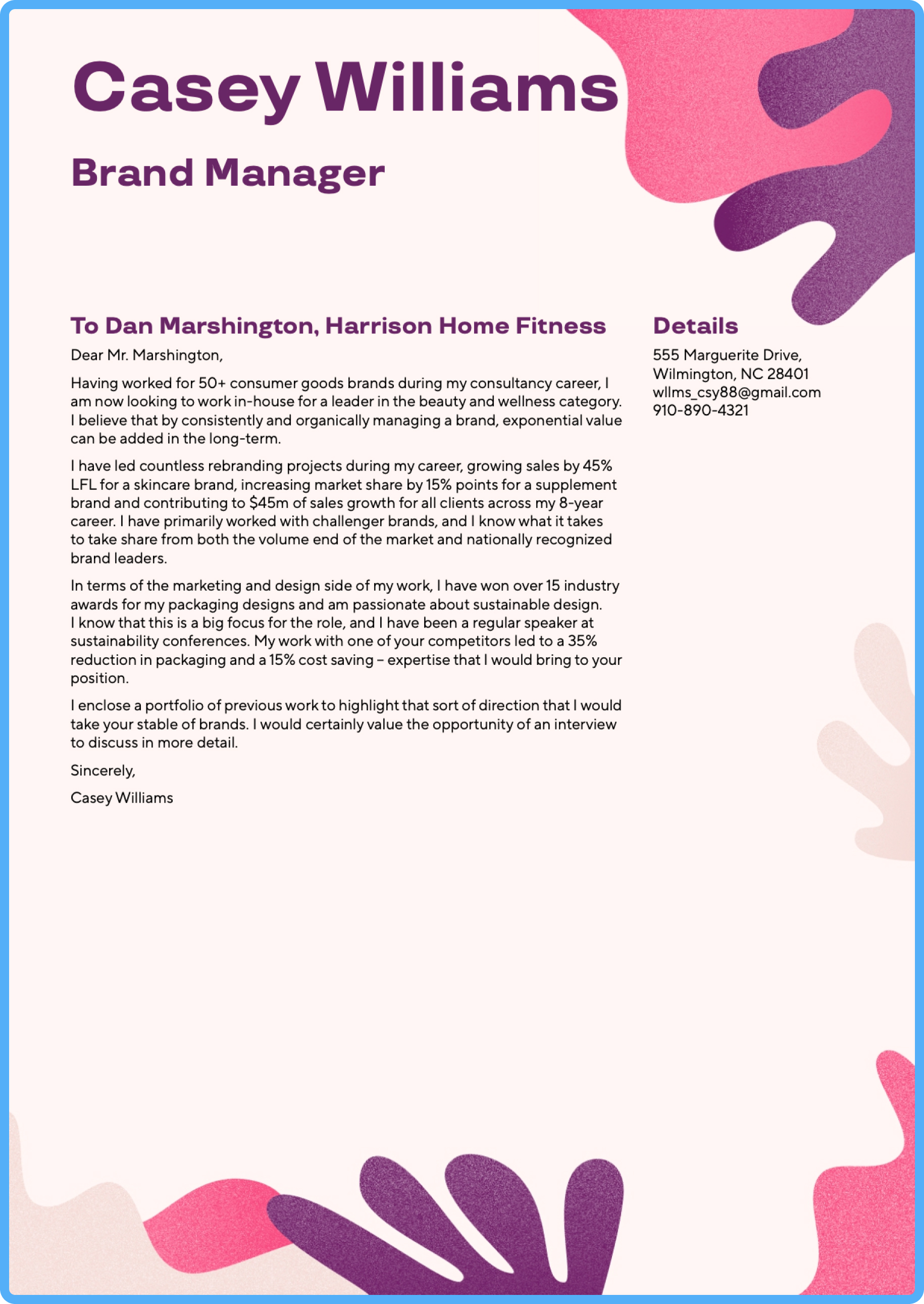
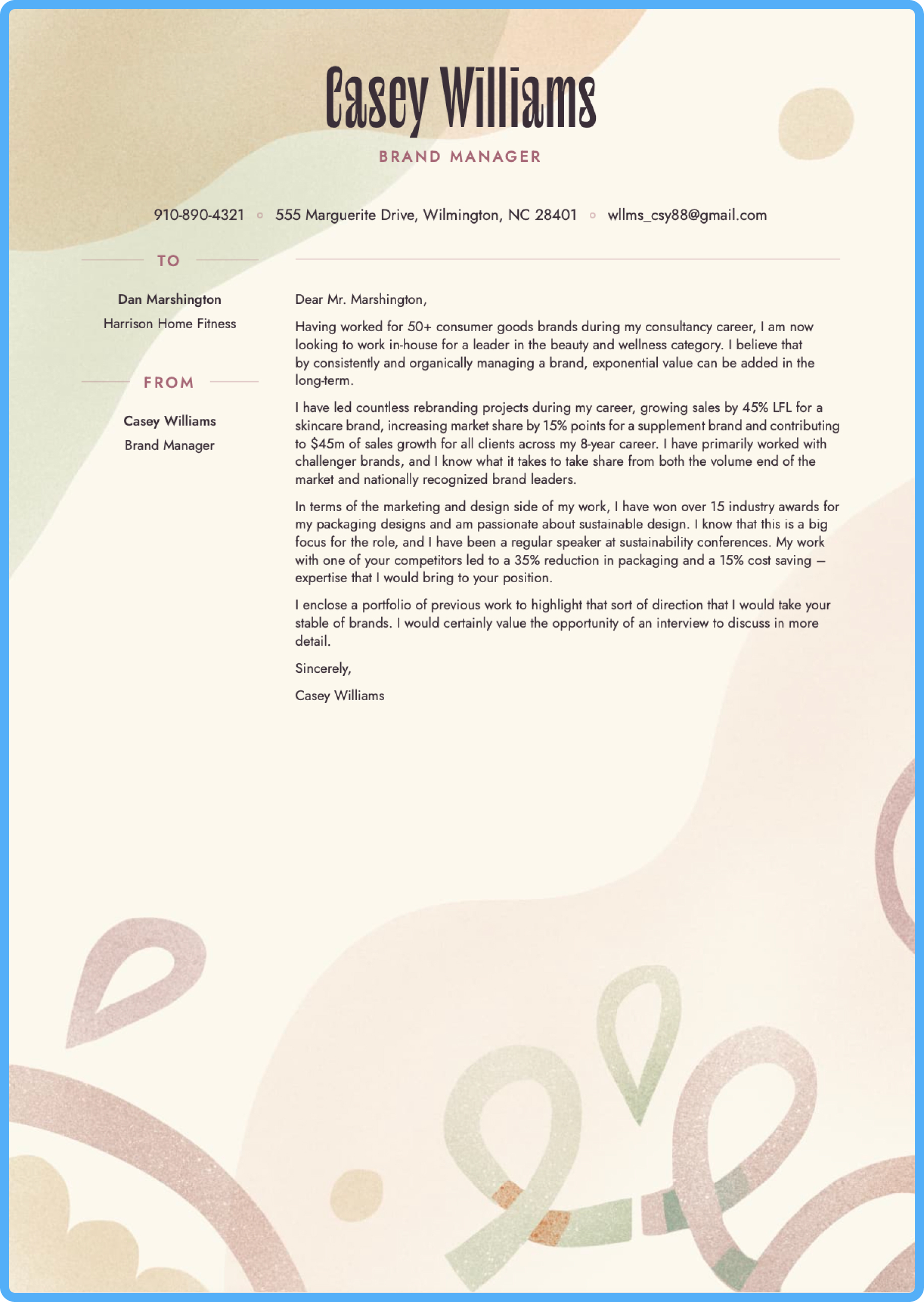
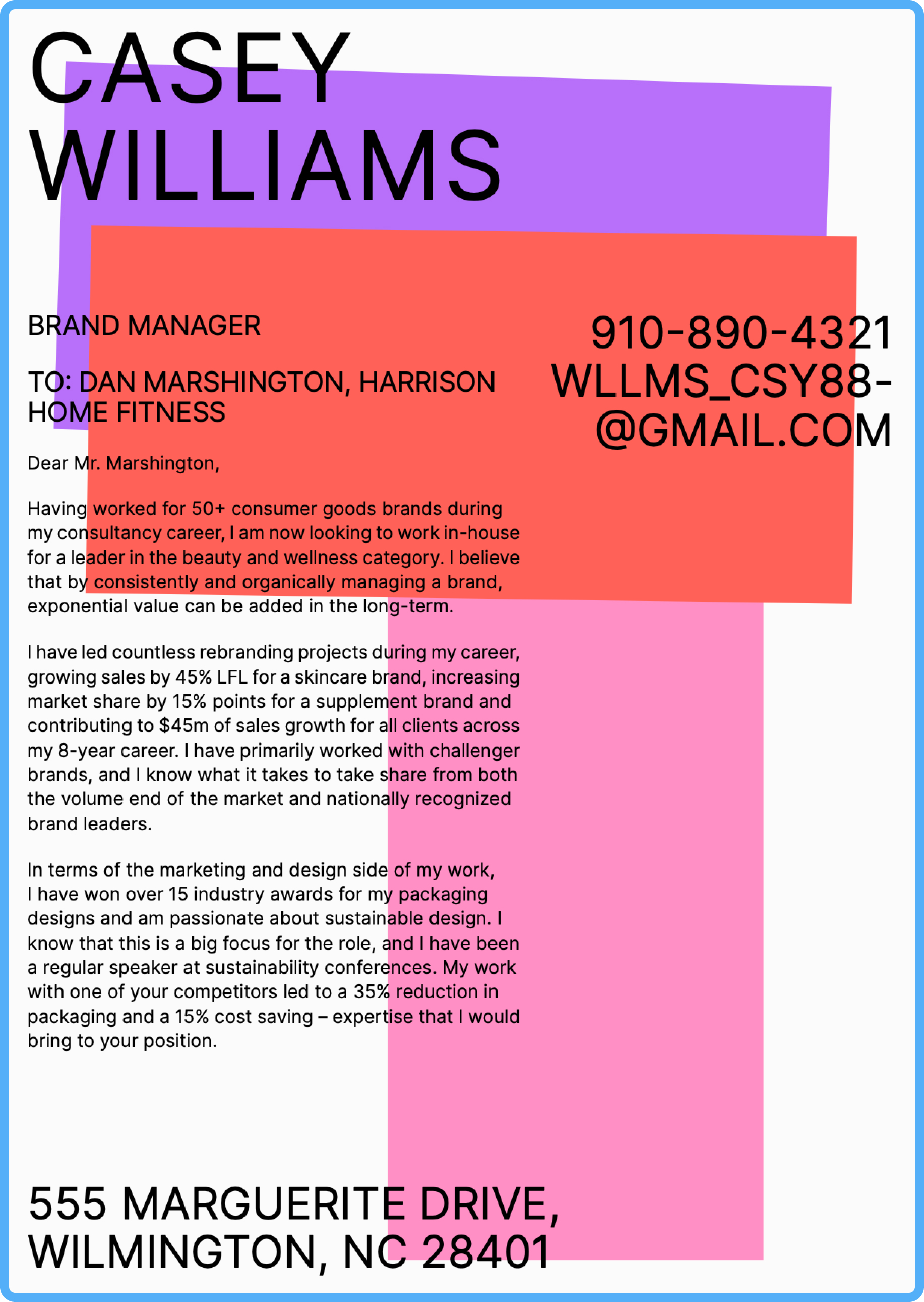
Print it out to check the color
Keep in mind that if HR prints out your cover letter, the colors may not render the way you want them to. Older printers may muddy your hues or bleed color into your text. Make sure you also check to see if your text remains legible if your letter gets printed in black and white.
Design is all about balance and proportion. If you have a colorful cover letter, balance it with strong font choices. Our boldest templates—Cape Town, Lisbon and Rio—pump up the size of your name to make sure it maintains its prominence over the color.
Even design professionals can take advantage of our cover letter templates to avoid the pitfalls of formatting.
Key takeaways
The header of a cover letter serves several purposes, but its main function is to act as the business card of your document, so make sure you proofread it just as carefully as you do the rest of your letter. To create a cohesive application document, match the style of your cover letterhead with that of your resume header. Header design options include font size and styles, capitalization, placement and use of color.
Look to the cover letter templates from Resume.io for dozens of customizable designs to match your style and smooth your path to an attention-getting header.





